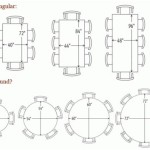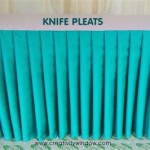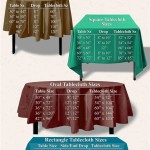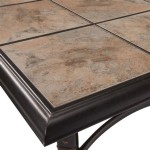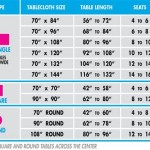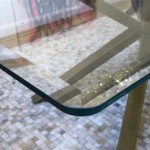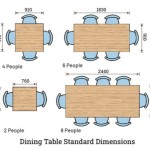How to Decorate a Table Top: A Comprehensive Guide
Decorating a table top is an exercise in balancing aesthetics and functionality. A well-decorated table top enhances the overall ambiance of a room while also serving a practical purpose. This article will explore various approaches to table top decoration, covering key aspects such as selecting a theme, considering the table's purpose, and implementing design principles.
The process of decorating a table top begins with understanding its context. Is the table a centerpiece in a living room, a functional surface in a dining room, or an accent piece in a hallway? The intended use of the table will significantly influence the selection of decorative elements. For example, a dining table requires a different approach than a console table. Dining tables often demand a more practical approach, considering ease of cleaning and space for serving dishes. Console tables, on the other hand, may be purely decorative, allowing for more creative freedom. Before starting, it is beneficial to consider the overall design aesthetic of the room. The table top decoration should complement the existing style, be it modern, traditional, minimalist, or eclectic.
Furthermore, it is essential to consider the size and shape of the table top. A large, rectangular table offers ample space for a diverse arrangement of items, while a small, round table necessitates a more curated selection. The table's shape also dictates the arrangement. For round tables, a central focal point often works best. For rectangular tables, a runner or a series of objects arranged linearly can be more effective.
Choosing a Theme and Color Palette
The foundation of any successful table top decoration is a cohesive theme. This theme dictates the type of objects used, the color palette employed, and the overall feeling the table evokes. The chosen theme should align with the room's style and the intended function of the table.
Consider seasonal themes. Decorating for holidays or specific seasons can revitalize a room's atmosphere. For example, autumnal themes might incorporate natural elements like leaves, gourds, and warm-toned candles. Winter themes could include pine cones, evergreen branches, and metallic accents. Spring lends itself to floral arrangements and pastel colors, while summer can be reflected with beach-themed objects and vibrant hues.
Beyond seasonal themes, consider other design concepts. A rustic theme might feature natural wood elements, distressed finishes, and woven textures. A modern theme could incorporate minimalist sculptures, geometric patterns, and a neutral color palette. A bohemian theme allows for a more eclectic mix of textures, colors, and patterns, often incorporating vintage or ethnic-inspired pieces.
Color plays a crucial role in setting the mood. A cohesive color palette helps to unify the disparate elements on the table top. The palette should complement the existing colors in the room, but can also introduce a contrasting accent color to add visual interest. Consider the psychological impact of colors. Warm colors, such as red, orange, and yellow, tend to create a feeling of energy and warmth. Cool colors, such as blue, green, and purple, evoke a sense of calm and serenity. Neutral colors, such as white, gray, and beige, provide a versatile backdrop that allows other colors to stand out.
When selecting a color palette, it is often helpful to utilize the 60-30-10 rule. This rule suggests that 60% of the space should be dominated by a primary color, 30% by a secondary color, and 10% by an accent color. Applying this rule to table top decoration can help create a balanced and visually appealing arrangement.
Selecting and Arranging Decorative Elements
The selection of decorative elements is where personal style truly shines. A variety of objects can be used to adorn a table top, from functional pieces like trays and bowls to purely aesthetic items like sculptures and artwork.
Books are a versatile and often overlooked decorative element. Stacking books can create height and visual interest, and their spines can add color and texture to the arrangement. Consider stacking books of varying sizes and colors to create a dynamic display. Objects can also be placed on top of the books to further enhance the arrangement.
Trays and bowls are both functional and decorative. They can be used to corral smaller items, such as remote controls, keys, or jewelry, while also adding a touch of elegance to the table top. Trays come in a variety of materials, including wood, metal, and ceramic, each offering a different aesthetic. Bowls can be filled with decorative objects, such as potpourri, decorative stones, or seasonal items.
Candles and lighting fixtures are essential for creating ambiance. Candles add warmth and a soft glow to the room, while lamps provide functional lighting. Consider using candles of varying heights and sizes to create a visually interesting display. Lamps can also serve as a focal point, especially if they have a unique design or finish.
Plants and floral arrangements bring life and freshness to a table top. Fresh flowers add color and fragrance, while plants provide a touch of greenery. Consider using a variety of plants, from small succulents to larger potted plants, to create a dynamic display. Faux plants can also be used, particularly in areas with limited natural light.
Sculptures and artwork add a touch of personality and sophistication to a table top. Choose pieces that reflect your personal style and complement the overall theme of the room. Sculptures can be made from a variety of materials, including metal, wood, and ceramic. Artwork can include paintings, prints, or photographs.
The arrangement of these elements is just as important as their selection. Consider the principles of design, such as balance, symmetry, and proportion. Balance refers to the visual weight of the objects on the table top. Symmetry involves creating a mirror image on either side of a central axis. Proportion refers to the relative size of the objects in relation to each other. A balanced arrangement will feel visually stable and pleasing to the eye. Asymmetry can also be employed to create a more dynamic and modern look, but it still requires careful consideration of balance.
Varying heights are critical for creating visual interest. Avoid placing all objects at the same level. Use books, risers, or decorative boxes to elevate certain items and create a more dynamic arrangement. Overlapping objects can also add depth and dimension to the display.
Maintaining Functionality and Avoiding Clutter
While aesthetics are important, the functionality of the table top should not be overlooked. A beautifully decorated table top is not useful if it is cluttered and impractical.
Prioritize clear surfaces. Avoid overcrowding the table top with too many objects. A few carefully selected items are more effective than a collection of clutter. Leave ample space for placing drinks, books, or other items without disturbing the arrangement.
Consider the traffic flow around the table. Ensure that the arrangement does not obstruct pathways or make it difficult to navigate the room. Leave enough space around the table so that people can move freely.
Use trays and baskets to organize smaller items. These containers can help to corral clutter and create a more organized look. Choose trays and baskets that complement the overall theme of the table top decoration.
Regularly declutter the table top. Remove any items that are no longer needed or that are contributing to the clutter. This will help to maintain a clean and organized look.
Adapt the table top decoration to suit different occasions. For example, during a party, the table top may need to be cleared to make room for serving dishes. After the party, the decorative elements can be restored.
Ultimately, table top decoration is a personal and evolving process. Experiment with different arrangements and objects until the desired aesthetic is achieved. The key is to create a space that is both visually appealing and functional, reflecting individual style while enhancing the overall ambiance of the room.

Table Styling Ideas For Top Decor Supreme Accents

How To Decorate A Tabletop Tree Like Designer Stonegable

How To Decorate A Console Table Top Seeing The Forest Through Trees

How To Decorate A Tabletop Tree Like Designer Stonegable

Tabletop Archives How To Decorate

How To Decorate A Tabletop Tree Like Designer Stonegable

How To Decorate A Console Table Top Seeing The Forest Through Trees

Top 5 Tips On How To Decorate A Table The One Uae

How To Decorate A Dining Table Best 5 Ideas Rosaholics

20 Thanksgiving Table Centerpiece Ideas 2024 Balsam Hill

